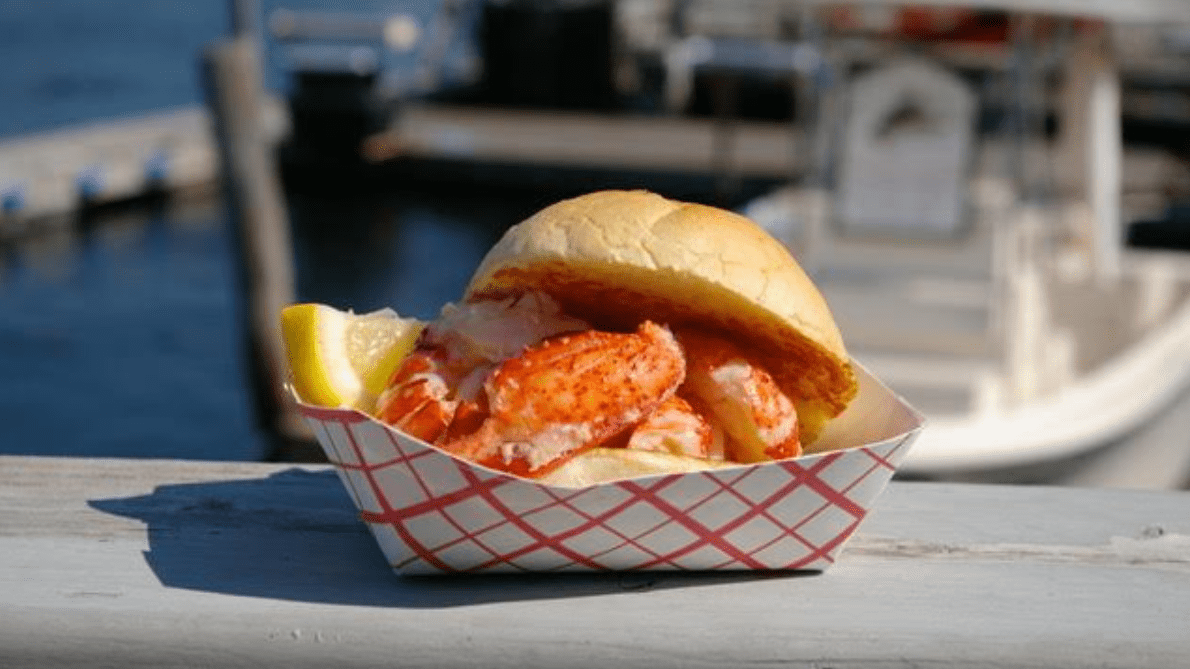You might want to stick to hot dogs this Memorial Day Weekend.
One lobster roll? That will be $ 34, please.
Red’s Eats in Wiscasset, Maine is charging exactly that for a lobster roll. But it’s not the only lobster shack that has been forced to hike prices, Americans gearing up to indulge in the Maine summertime staple should expect to pay more this Memorial Day Weekend.
Americans have been spending more money on food over the last year, due in large part to rising inflation. Food prices at grocery stores, which increased 5.7% on average in April of this year compared to April 2020, according to data from NielsenIQ NLSN, +0.65%, a market research business.
“I’m paying 30% more for lobsters this year than 2019,” said Steve Kingston, owner of The Clam Shack, a Kennebunkport, a Maine-based restaurant known for its lobster rolls.
“ During the pandemic, lobster restaurants fought to stay afloat with takeout orders. ”
Unlike other restaurants that charge a market price for lobster rolls, meaning the price is subject to change based on the price they pay for lobsters, Kingston prefers to charge a flat rate each summer.
In 2019, he sold lobster rolls for $ 20.95 but this summer he’s selling them for $ 24.95 — a nearly 20% difference.
The Bangor Daily News carried out a survey on the $ 34 lobster rolls at Red Eat’s. Some 81% of readers said that’s too expensive for a lobster roll.
Gary Blackman Sr., who runs Karen’s Hideaway lobster shack in Boothbay, Maine, told the paper: “The price is way up, but the boys aren’t catching anything. But that’s the kind of year it’s been. Why? Nobody has any answers.”
“It could be the water’s too cold, the weather’s crazy. I’m hoping that in a week or two, things change,” he added.

The lobster roll sold at The Clam Shack, a Kennebunkport, Maine-based restaurant, is priced at $ 24.95 this summer.
Daryl Getman
At the onset of the pandemic, lobstermen had a surplus of the crustaceans on their hands
Others have theories as to the costly crustaceans. During the COVID-19 pandemic, closed restaurants fought to stay afloat with takeout orders, and many simply couldn’t afford to purchase lobsters through lobster processing businesses, even at bargain prices, Kingston told MarketWatch.
Normally, lobstermen could export to China — one of the top lobster-importing countries — but travel restrictions and shuttered ports in the country where coronavirus was first discovered in December 2019 prevented them from doing so.
“ Demand for lobsters is clawing back — but lobsters aren’t. ”
The Food and Agriculture Organization of the United Nations, or FAO, said the bottom fell out of the international lobster industry in those early months of COVID-19 as people stayed home.
U.S. lobster exports declined by 44.6% to just 4,583 tonnes in the first six months of 2020, while Canada suffered a 17.8% drop to 40,092 tonnes during the same period, it said. The largest importer, U.S., imported 24,326 tonnes or 11.5% less than during the same period in 2019.
Now that most restaurants in Maine can operate at full capacity and vaccinated out-of-state travelers can visit without having to quarantine or get tested for coronavirus, demand for lobsters is clawing back — but lobsters aren’t.
If properly preserved, she said lobsters could stay fresh for up to 24 months.
Lobsters were few and far between in the winter, Kingston said. But even as peak harvesting season is nearing, which typically kicks off in June and lasts through November/December in Maine, lobsters have been hard to come by.
“ ‘The entire seafood sector really relies on the restaurant industry.’ ”
Most lobster processing businesses sold lobsters they froze last March by early September, said Annie Tselikis, executive director of the Maine Lobster Dealers’ Association, a trade association that supports lobster wholesalers and processors.
Kingston and other restaurants that make lobster rolls widened their customer base over the course of the pandemic by shipping lobster roll-making kits across the country.
Even as more Americans are dining out, the kits are still in high demand, Kingston and Tselikis said.
People eating lobster at home are competing with the same lobster Kingston buys for The Clam Shack, he said. Locals won’t think twice about the price of his lobster rolls, he said, but he worries about turning out-of-towners away.
“You’re dealing with the champagne of proteins,” Tselikis said, referring to lobsters. “When you start with an expensive protein, you’re going to get expensive menu prices.”
